I studied the Theo Moorman inlay technique when I was in art school in the 1970s. Weaving as an Art Form was one of the first books I invested in as a poor college student, and it has remained on my shelf as inspiration for 40 years. The Theo Moorman inlay technique is quite simple, really: a plain-weave cloth woven as background supports a weft material of any type held down with fine tie-down threads. Unlike in tapestry, the decorative weft material is not visible on the back of the finished cloth; rather, it floats on the surface.
By using images printed onto fabric and then sliced into strips as the decorative weft, old family photos can become heirloom artworks. Scanning old images is fairly simple—I’ve found that a flatbed scanner works well. The key is to scan images at as high a resolution as you can. This way, you will have more data to manipulate, especially if you want the image enlarged.
For enlarging and editing, I use Photoshop Elements, a relatively inexpensive photo-editing software. With it, I can manipulate the image, crop, adjust lighting, and use the cloning tool to clean up dust, tears, and discolorations of old photos. There are also tools for improving the quality of images; you can even add a sepia tone when a family photo has been poorly copied and lost its aged quality. Filters can be added as well, creating a more pleasing image that will reproduce well in cloth.
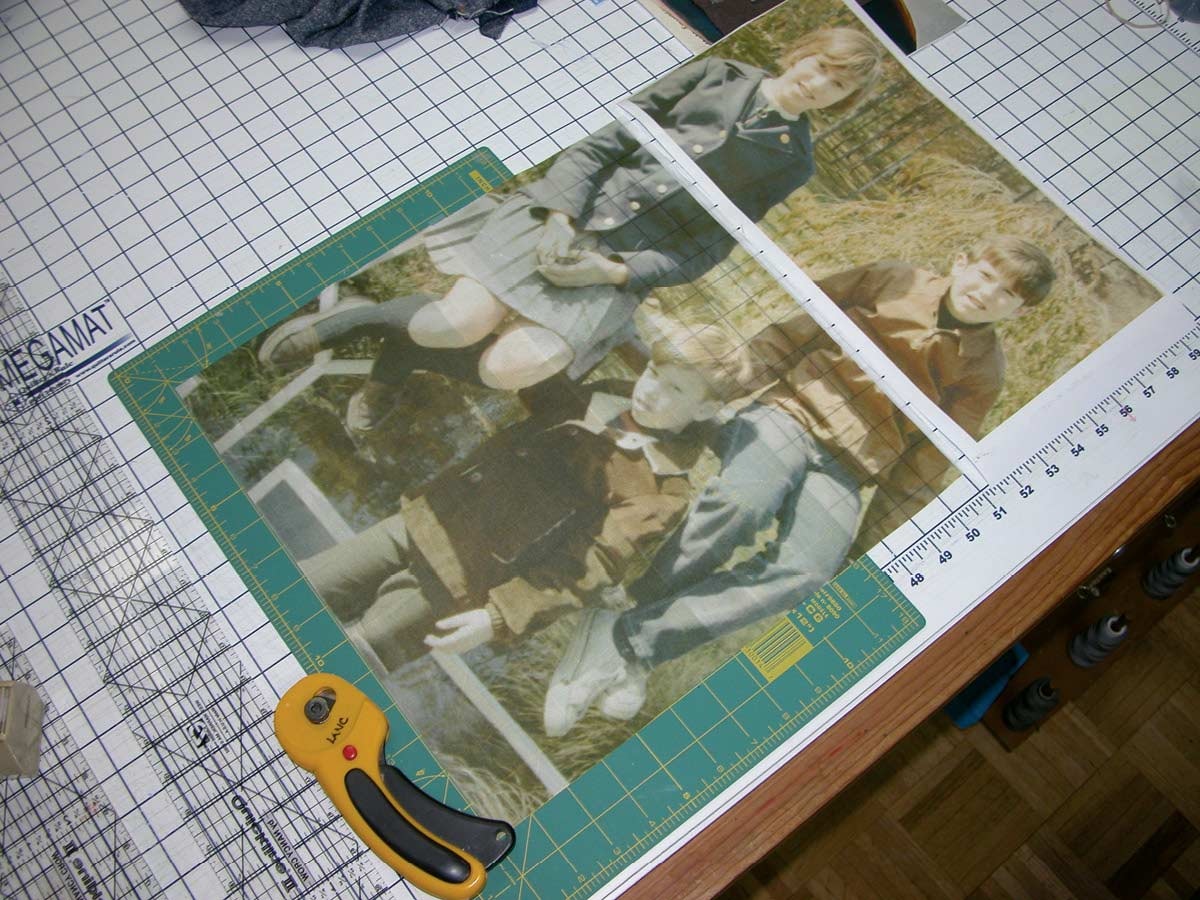
Try using silk habotai on 10-foot rolls, and print an enlarged image in horizontal sections.
Dharma Trading Company sells cloth that is treated to hold onto printer ink and has a paper backing to act as a carrier through a printer. It is available in a half dozen different silk fabrics as well as a great selection of cottons. The fabric sheets are 8½ by 11 inches and designed to safely travel through all inkjet printers. In addition, Dharma sells 8½-inch wide treated habotai silk and cotton poplin percale on 10-foot rolls. These come in handy when making large reproductions: an enlarged image can be divided horizontally into sections and then printed sideways.
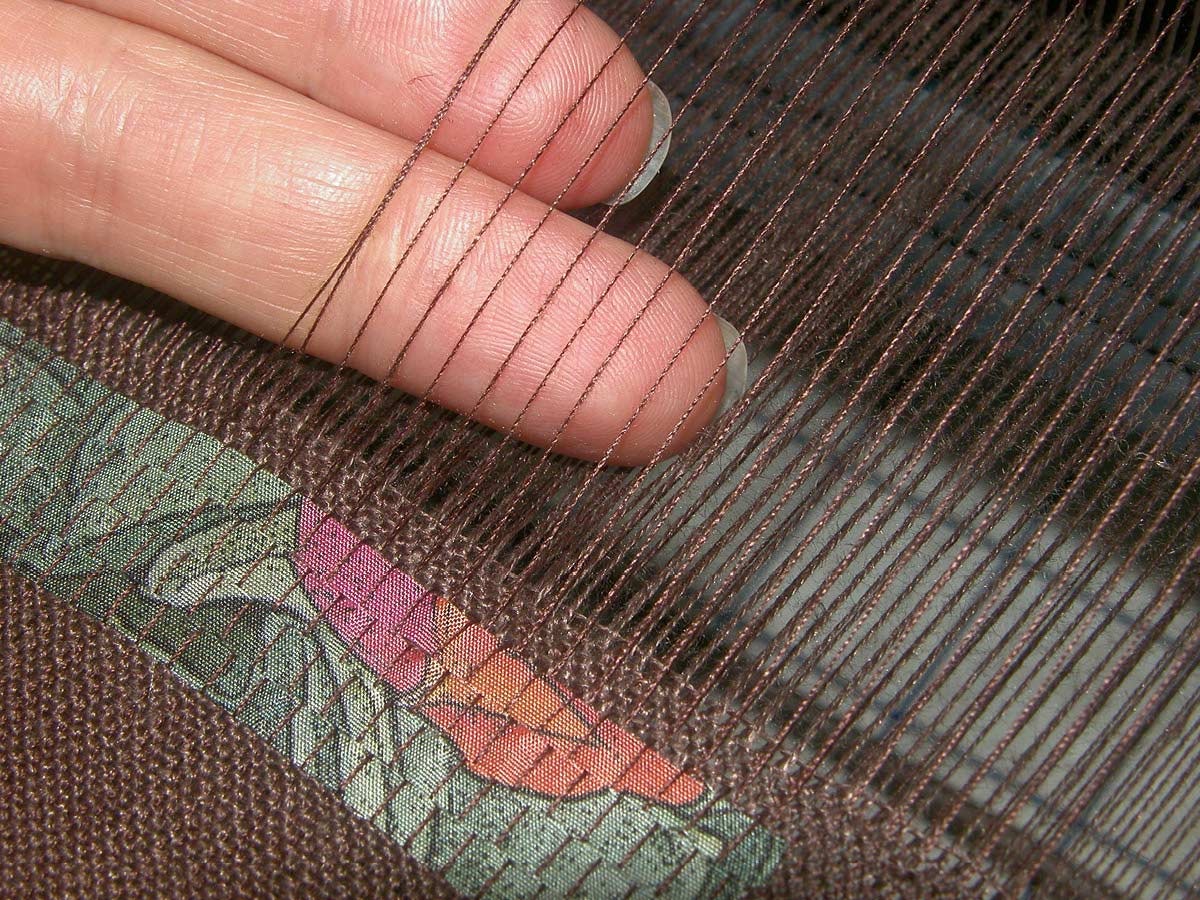
Weave five picks of ground tabby while keeping one shaft of tie-down threads in a raised position.
Once the image is printed, I tear off the paper backing by scoring and gently peeling it from the cloth. I then use a rotary cutter to cut the image into strips as I need them, making the width of each strip equal to about five picks of background weft.
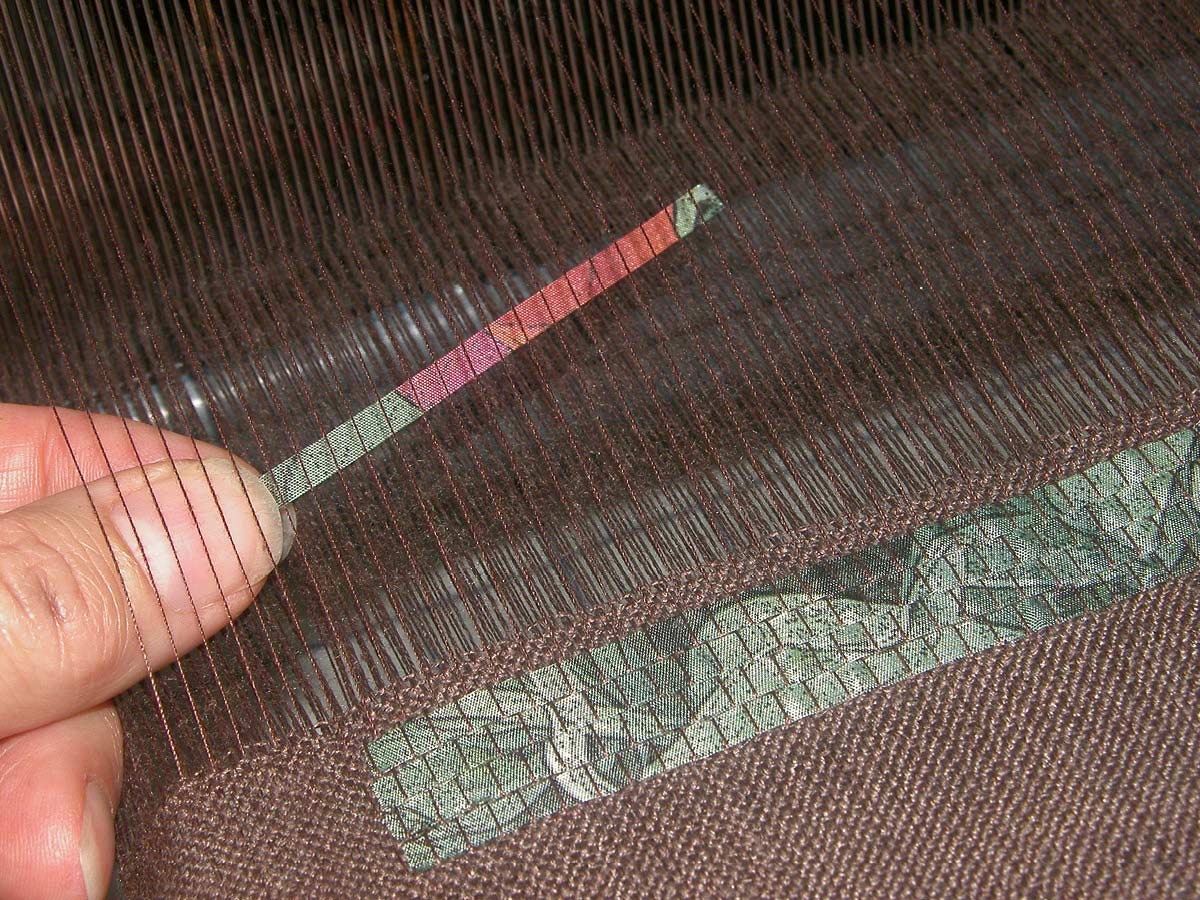
Cut a strip of printed silk or cotton the depth of about five picks of ground cloth. Slip the strip under the raised tie-down threads, being careful not to twist or invert.
The ground warp and weft should be 10/2 cotton or finer. I’ve sett 10/2 cotton at 24 ends per inch (epi) and have also sett 14/2 linen at 30 epi. The tie-down threads should be strong and thin—sewing thread works well. You can match the tie-down threads to the ground cloth or to the predominant color of the image.
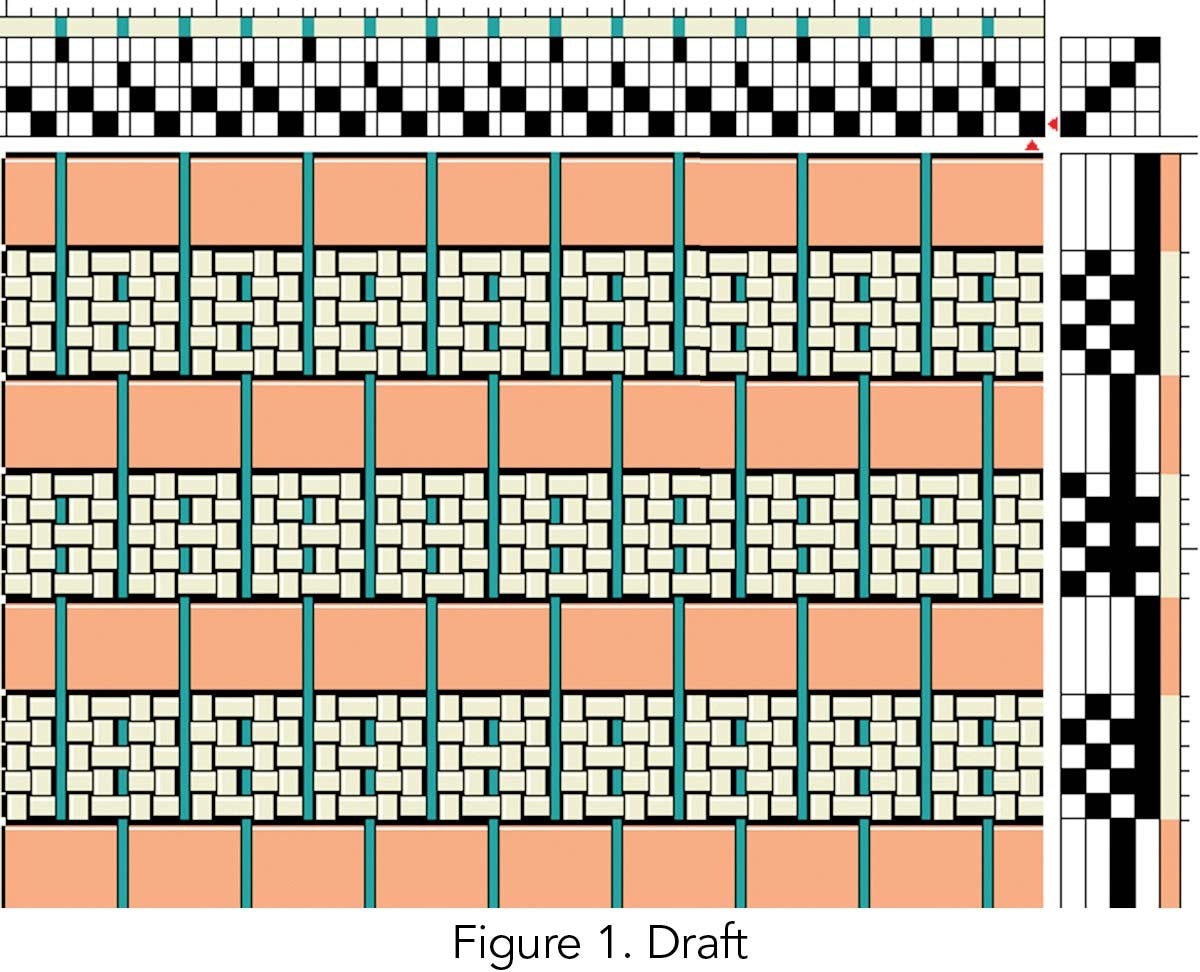
You only need four shafts for this technique. As shown in the draft (Figure 1), the ground threads are threaded on shafts 1 and 2 and the tie-down threads on shafts 3 and 4. There are two background threads for each tie-down thread. Choose the sett based on the background threads; the tie-down threads just go along for the ride and do not influence the structure or the sett.
Begin with a plain-weave header using shafts 1-3 and 2-4. Once the header or border is established, hold one of the tie-down shafts up while weaving plain weave for five picks. The other tie-down shaft will weave with the background. Cut a strip the depth of five picks of ground cloth and slip it under the raised tie-down threads, gently tapping it into place over the ground cloth with the beater. Repeat the sequence, raising the opposite shaft of tie-down threads. Be careful to minimize draw-in, as it can distort the image. I always beat on an open shed, and in large pieces, a temple is useful.
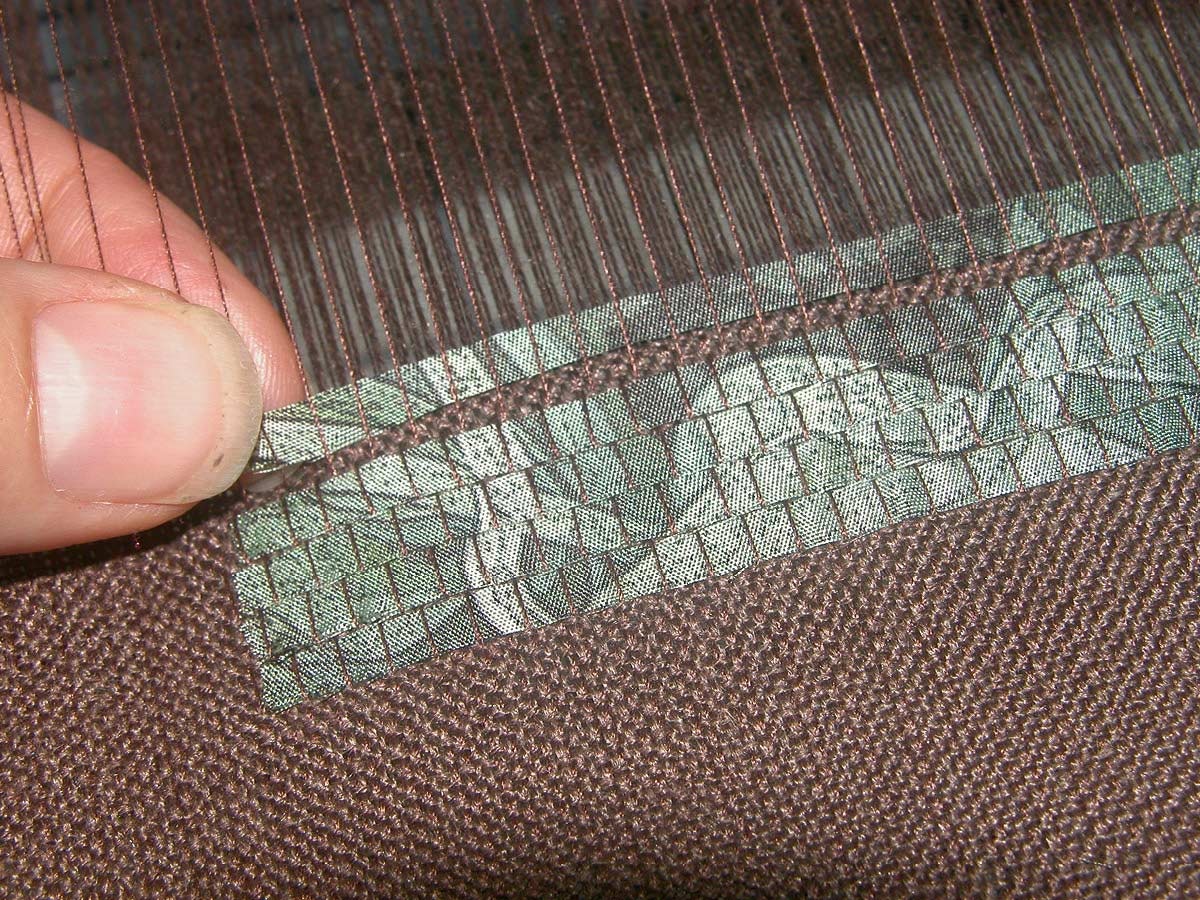
Slide the strip into place along the previously placed strip and tap into place with the beater.
A neutral ground cloth and tie-down threads allow just about any image to be woven quickly. I keep a small table loom set up for quick gifts for special occasions. At a recent conference workshop, participants brought in special photos from their own lives: long-deceased relatives, pets, grandchildren, special vacations, and just really beautiful images. It was lovely and inspirational to watch them weave memories important to them.
DARYL LANCASTER, a handweaver and fiber artist known for her handwoven garments, has been sewing for more than 50 years. She gives lectures and workshops all over the United States. Daryl maintains a blog at www.weaversew.com/wordblog.

